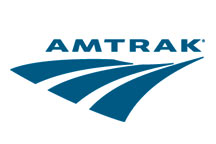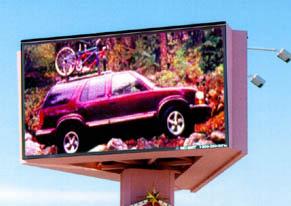The heat of the rhetoric is on “broil” in the on-going Kellar Branch rails-to-trails fiasco. A couple weeks ago, Carver Lumber wrote to the Surface Transportation Board (STB) about Central Illinois Railroad Company’s (CIRY, the city’s hand-picked carrier) latest breach of contract.
Rail cars that were supposed to be delivered to Carver by CIRY within 24 hours took a week to be delivered. CIRY shot back a response to Carver and the STB stating that it wasn’t their fault — it was Union Pacific’s and Carver’s for not notifying them the cars were there. They further stated, “Carver’s unsubstantiated allegations to the contrary are being orchestrated by PIRY [Pioneer Railcorp], which is attempting to misuse the provisions for alternative rail service to negate lawful termination of its contractual and regulatory right to provide service over the rail line.”
Monday, Carver wrote back to the STB (2.8MB PDF) and had this to say about the situation:
Frankly, Carver Lumber is frustrated that we are being ignored, and outraged that CIRY is being allowed to continue to ignore its common carrier obligations and lie to the Board. At this point, it is quite clear that Carver is not being given adequate service, and that the abuse will continue unless the Board takes prompt action.
Subsequent to our Letter, I received a phone call from Union Pacific, that was followed up by a letter, dated October 3, 2006. In that letter (a copy of which is attached), Union Pacific confirmed that it is sending CIRY normal EDI interchanges of our cars, stating plainly that “Union Pacific Railroad does notify the CIRY via electronic data interchange when cars are delivered. This was verified with our own electronic records.”
Apparently unaware that UP would respond, CIRY filed a letter that same day, stating that the service failure was due to “the failure of Union Pacific Railroad Company (UP) to notify CIRY, of placement of the railcars on the interchange track as required by the governing interchange agreement.”
In light of the UP letter, this appears to be an outright lie.
CIRY then has the unmitigated gall to suggest that Carver has an obligation to survey the interchange site and inform them of when cars are delivered, claiming that Carver, having been forced by CIRY to do this, has assumed an obligation as an “established custom and practice”. Carver takes issue with this assertion. Carver is a customer. We have no obligation to send employees out of our facility to observe what cars are interchanged to CIRY by another railroad, and then call CIRY.
You can almost feel the blood pressure going up as you read this, can’t you? It gets better. Later in the letter, Carver says this:
The situation is outrageous. Carver has had enough broken promises, distortions, and outright lies. In the fourteen months since PIRY’ s exemplary service was “replaced” by CIRY, the “service” has been abysmal. In fact, there was no service at all for half that time. Since March, CIRY has broken waybills and rerouted shipments off the Kellar Branch. This latest letter, in which they falsely blame the UP for their failure, and baldly assert that Carver, a customer, should act as their dispatcher, because we have been forced to do so by their patently inadequate “service,” is a direct challenge to this Board. CIRY is making a complete mockery of the regulatory system.
Currently, I am advised that there is a loaded car destined for Carver at the TZPR/CIRY (Kellar Branch) interchange (“TTZX” #561751), and two other cars (“BNSF” #563169 and “BNSF” #561751) being held at the TZPR yard. My shipper routed these cars via the Kellar Branch, because CIRY has seen fit to close the so-called “western connection” (“western fiasco”, would be a better term), for a crossing project. The materials on these three cars are critical to our operations, and has been “in transit” for some three weeks. We need our cars delivered. The Keller Branch is still a rail line in interstate commerce. We are, therefore, respectfully requesting that the Board enter an order, within the next 24 hours, either directing CIRY to comply with its common carrier obligations and deliver our cars via the Kellar Branch, or granting Pioneer Industrial Railway Co. (“PIRY”) an Alternative Service Order so PIRY can deliver our cars. PIRY has assured me they can have the cars to us within thirty-six hours of receiving an A.S.O.
In the absence of an A.S.O. Carver Lumber Company will have no alternative but to have the materials transloaded on an emergency basis. We are almost out of material now, and our business is risking the loss of a significant amount of revenue. We desperately need your immediate assistance to utilize the Kellar Branch. CIRY is never going to provide adequate-service, and we are tired of being a sacrificial lamb for the City of Peoria’s bike trail fantasies.
And the gloves come off. They’re fed up and they’re not going to take it anymore. The city suckered them into playing along, promising comparable service via the western connection, promising to take any legal action necessary to enforce CIRY’s compliance with their contract. And what has happened? The exact opposite. The city is paying CIRY’s legal bills instead and doing nothing — zero, nada — to help Carver Lumber receive adequate service.
I wonder where this falls in the Mayor’s Business Task Force report? Is “customer service” still the city’s “top priority”? Does the city honor its promises and enforce its contracts? Is there any integrity in the Public Works department?
Why does Carver Lumber, a local business since 1946, have to plead their case with a federal agency to get adequate transportation to their business? Why isn’t the City of Peoria admitting their western-connection strategy didn’t work and taking steps to honor their promises to Carver?
It’s time for the City Council to take action and direct city staff to stop jerking Carver Lumber around. The Council, if they really want to be pro-business, should immediately stop pursuing this rails-to-trails project and restore competitive rail service on the Kellar Branch. Actions speak louder than words, or task-force reports.

 I never would have believed that they would get this close. I was sure the Mets would win 4-0 or 4-1. They could still win 4-3 if they win the next two games in New York….
I never would have believed that they would get this close. I was sure the Mets would win 4-0 or 4-1. They could still win 4-3 if they win the next two games in New York…. Councilman Manning took the opportunity under New Business to thank Mayor Ardis and Councilman Jacob for attending the Amtrak meeting in Champaign on Tuesday afternoon. He was glad to see Peoria pushing for Amtrak service to be restored.
Councilman Manning took the opportunity under New Business to thank Mayor Ardis and Councilman Jacob for attending the Amtrak meeting in Champaign on Tuesday afternoon. He was glad to see Peoria pushing for Amtrak service to be restored. My take: I’m not sure what kind of sign Adams Outdoor Advertising has in mind, but from the discussion on the council tonight I get the impression that it’s an electronic billboard similar to Proctor Hospital’s relatively new sign at their Knoxville entrance, or the Civic Center’s sign at the corner of Jefferson and Kumpf, or this generic one above that I found on the internet. Can you imagine billboards like that all around the city?
My take: I’m not sure what kind of sign Adams Outdoor Advertising has in mind, but from the discussion on the council tonight I get the impression that it’s an electronic billboard similar to Proctor Hospital’s relatively new sign at their Knoxville entrance, or the Civic Center’s sign at the corner of Jefferson and Kumpf, or this generic one above that I found on the internet. Can you imagine billboards like that all around the city?